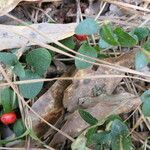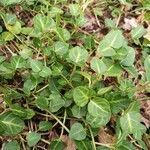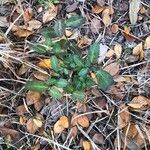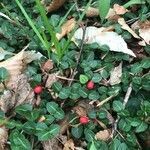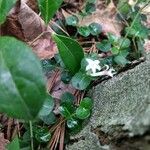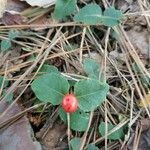Stems rooting at the nodes, 1–3 dm, forming mats; lvs petioled, round-ovate, 1–2 cm; fls mostly terminal, the common peduncle shorter than the subtending lvs; cor 10–14 mm occasionally with 3, 5, or 6 lobes; fr insipid, 5–8 mm thick, crowned with the short sep; 2n=22. Woods; N.S. to Ont. and Minn., s. to Fla. and Tex. May–July.
